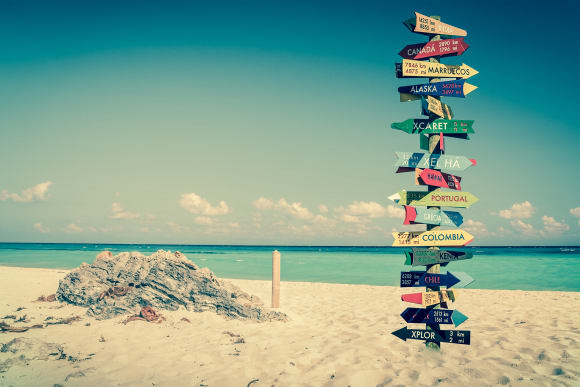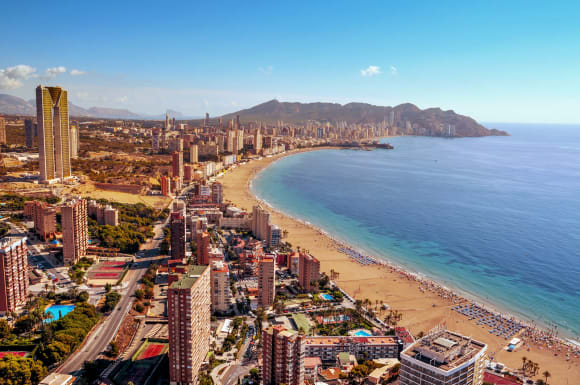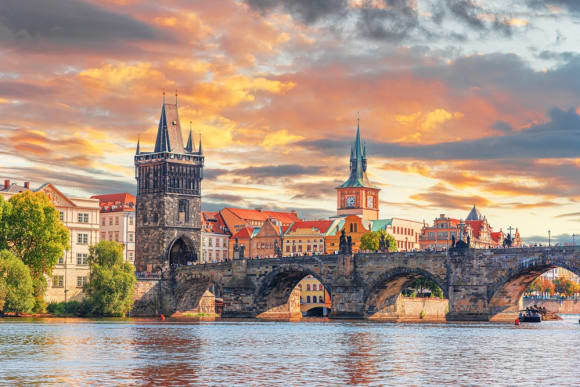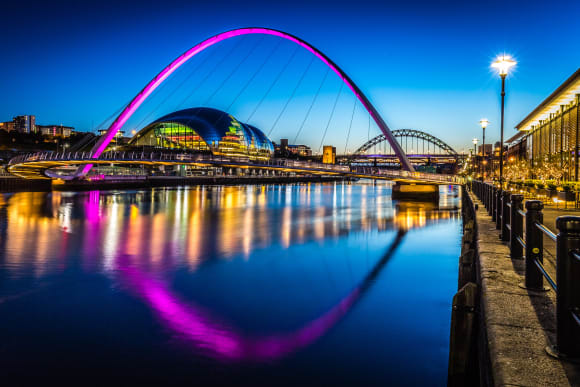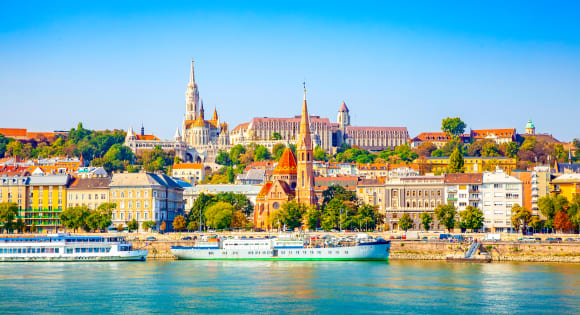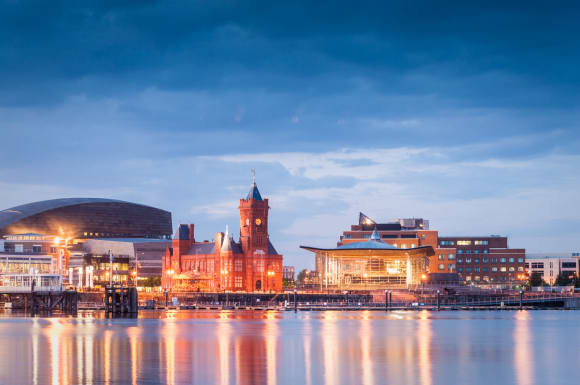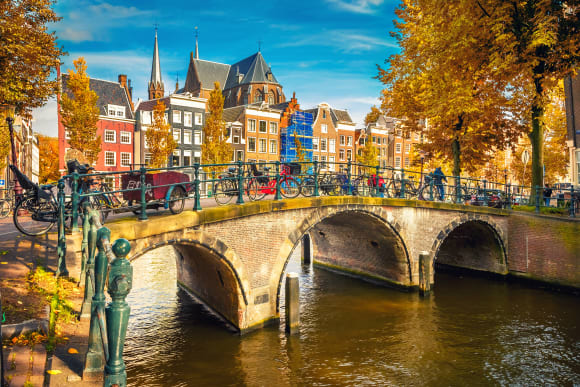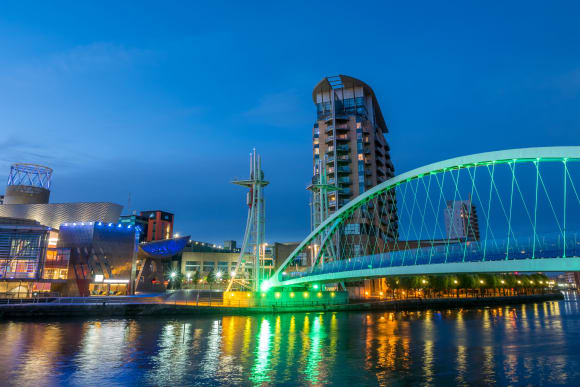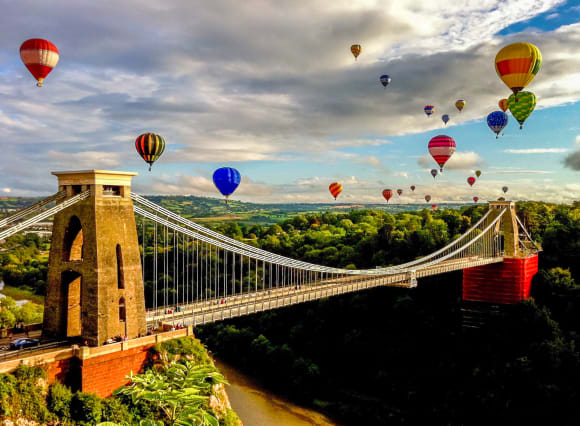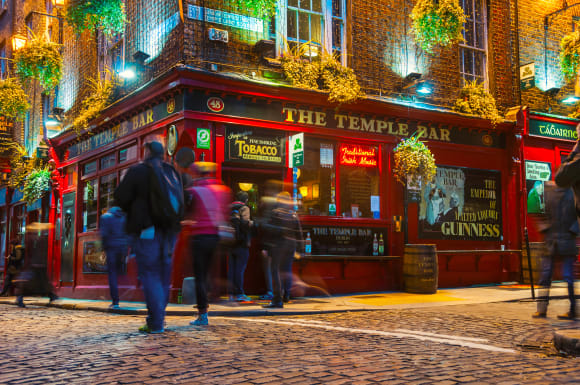There’s something for every stag party in England’s well-loved capital, with hundreds of attractions and and stag activities, thousands of restaurants and a pub practically on every corner. All this makes it one of the world’s top stag destinations, with nearly 20 million visitors each year all wanting to experience the notorious buzz of the city. London is an all year round stag destination, although it's especially popular during the summer months when temperatures reach around 23 degrees.
The city is a vibrant metropolis, bustling with culture and oozing style. If you and your stag party are looking to party till morning then there’s something going on 24/7 in London - so you’ll never get bored. In this lively capital, you’ll find everything you need to create an unforgettable stag weekend from microbrewery tours, escape rooms, bottomless brunches, whisky tasting, and every form of adrenaline and fun fueled team activity you can think of. Whatever you’re looking for, it’s here.
To find out more about booking your stag do in London visit our London stag page and get in touch with one of our stag experts who will book everything for you and your friends so spend your time focusing on your best man's speech or stag outfits!
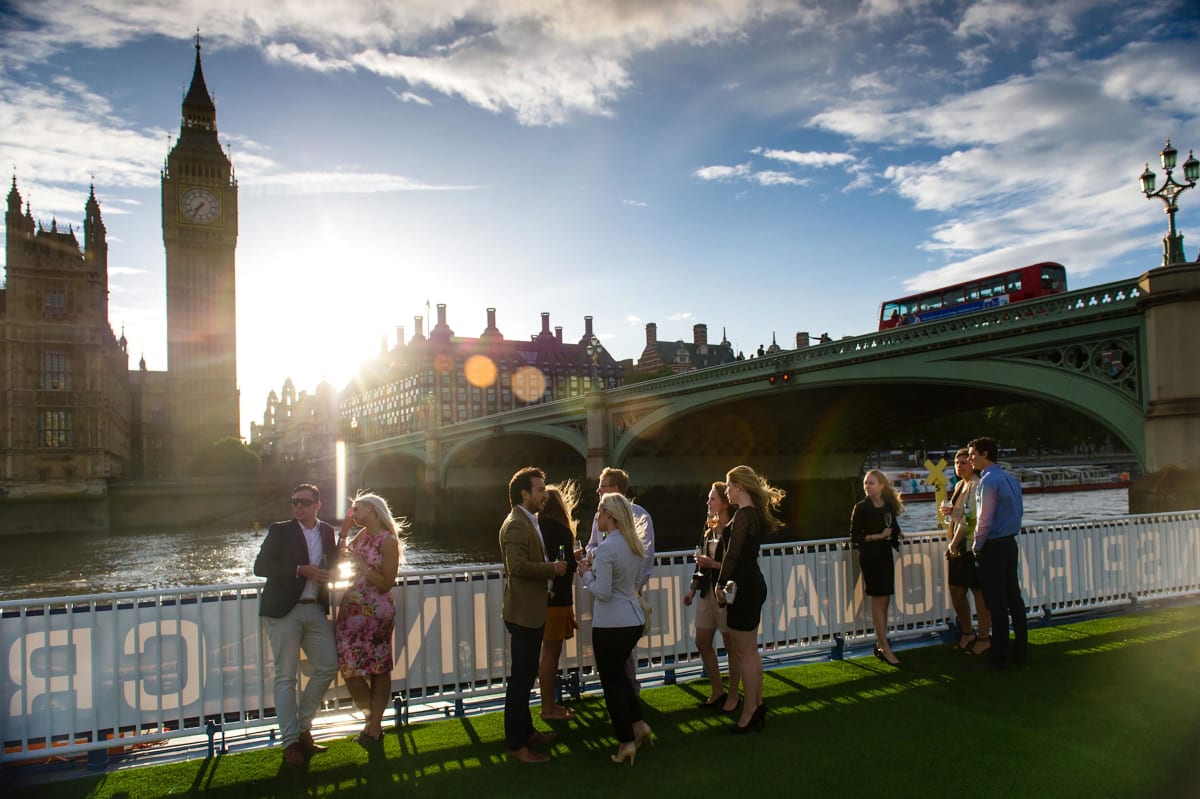
When to visit London
Spring (March to May) London comes into it's own when the cold bite of winter subsides and the roses of Hyde Park and Queen Mary’s Garden bloom for spring. Standing outside a pub for after-work drinks only requires a light jacket at best, and you’ll likely get a clear view of the city’s landmarks jutting from the horizon.
Summertime (June to August) is a popular time for stag weekends as it means long, warm nights, shorts weather and a window of opportunity to explore the city at leisure with a 99p cone in hand. Pop megastars headline the British Summertime Festival, London Pride paints the city centre in a rainbow of colour and Notting Hill Carnival drums in two days of riotous celebration.
Autumn (September to November) comes as welcome relief to many Londoners, as the heat calms down and the knitwear comes on. Crisp walks in Bethnal Green are a delight, while crowds grasp hot cups of tea to watch the Guy Fawkes Night fireworks. London’s true creative side comes out to play on Halloween, with some of the world’s most elaborate costume parties.
Winter (December to February) signals a time of rest and resolution for many Londoners, as workers head home for Christmas and the Big Smoke becomes a blissful ghost town. Central areas are draped in fairy lights, while merriment and clinking glasses ring from punters at local pubs, tiding in good cheer for the year ahead.
Getting around London
London is a highly accessible city to navigate despite its size, with a well-organised transport system that makes commuting a breeze.
Public transport
The London Underground (or ‘Tube’ as it’s more affectionately known) is a marvel of urban planning, connecting 270 stations in all directions of the city. You can get to most destinations using it, with some potential connections on the Overground and Trams. Different lines are helpfully laid out in specific colours, which you can check on this map.
The City of London operates all bus lines, making it easy to connect to parts of town far from a Tube station. The best part is you can use multiple buses for only £1.50 the whole journey, given that you hop off and on each within a one-hour time frame.
Please note that all of London’s public transport options are cashless. You can tap in and out with a payment card or phone, or purchase an Oyster card to top up as you go (these can be bought online or at each station, with a £5 minimum).
An incredibly useful app to have downloaded is Citymapper. This is one of the best ways to plan your route, sorting options according to duration, price and mode of transport. It will make navigating the Tube a breeze and keep you updated with live arrival times.
Taxis
London’s iconic black cabs have been getting passengers from A to B since 1958, and while the rise of Uber and other ride-sharing apps have caused some controversy, they still form a vital mode of transport in the city.
A lit sign means a cab is free. To wave it down, extend your hand towards the road (away from parked cars and bus stops). Fees are decided on a meter, at surprisingly competitive rates. Payment in cash or card. Here is a list of dedicated taxi ranks in London.
Fun fact: to qualify as a London cabbie you need to memorise the streets completely by heart - no Google Maps allowed!
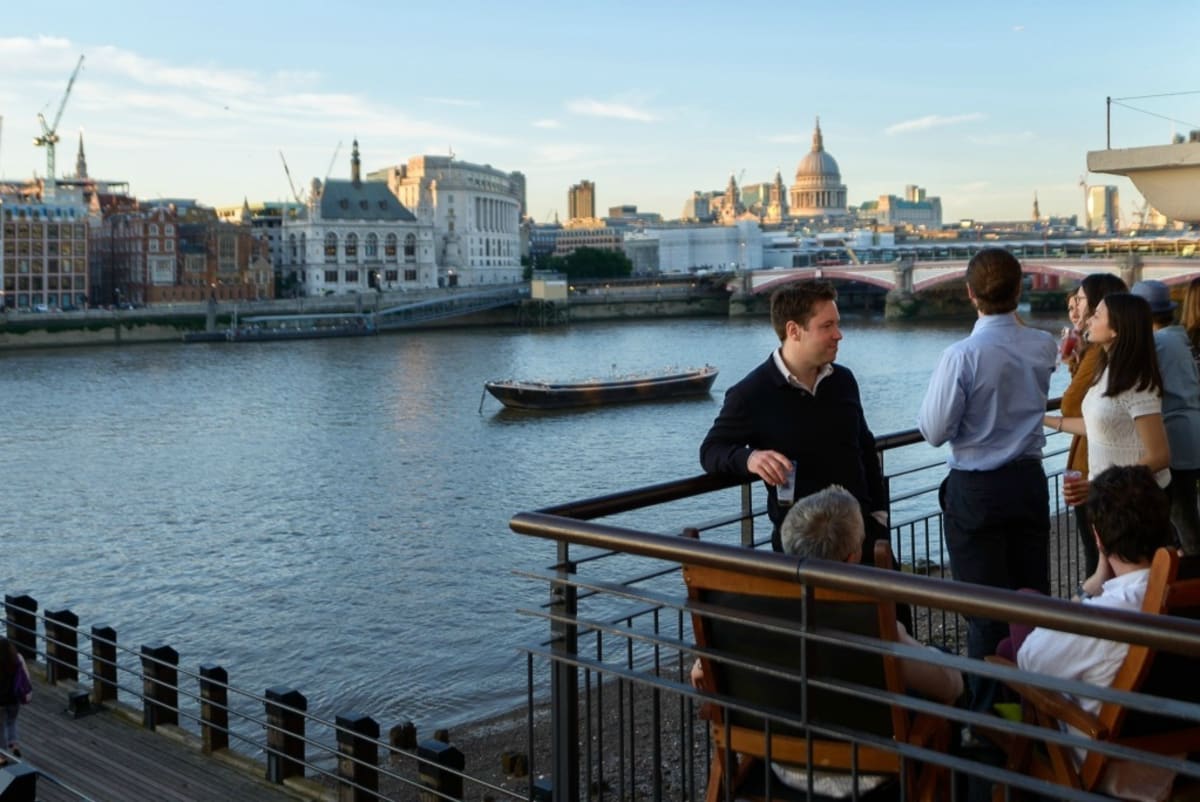
London Hot Tips
London Etiquette: Londoners love a good set of rules, which affects most daily interactions in a sort of unspoken social contract. Avoid talking to people on the tube. Stand in line for queues. Always say sorry (even if it wasn’t your fault). Don’t stand in the middle of a pavement and block the flow of pedestrians. Don’t brag (Londoners value modesty). And whatever you do, never stand on the left of the Tube escalators - that’s for walking only!
Multicultural London: One of the most beautiful things about London is its diversity - Chinese dim sum shops sit next to Ethiopian coffeehouses, the result of centuries of immigration and generations of family business. Head to Shoreditch for cracking Vietnamese food, Tooting’s ‘Curry Corridor’ and New Malden for the best Korean bibimbap this side of the Atlantic. Tuck in and taste London in all its variety.
How to stay safe In London
Compared with other cities of its size, London is a safe place for visitors - but it's worth taking a few precautions. Moped thieves love to swipe phones out of the hands of unsuspecting victims, so it’s advisable to keep it close and not waggle it about like free candy. Avoid walking alone at night, especially down dark alleyways in unfamiliar neighbourhoods - if a group of people demand your phone and wallet, hand them over, as it's not worth risking your life over. Only use registered black cabs or Ubers and keep the cash you hold to a minimum.
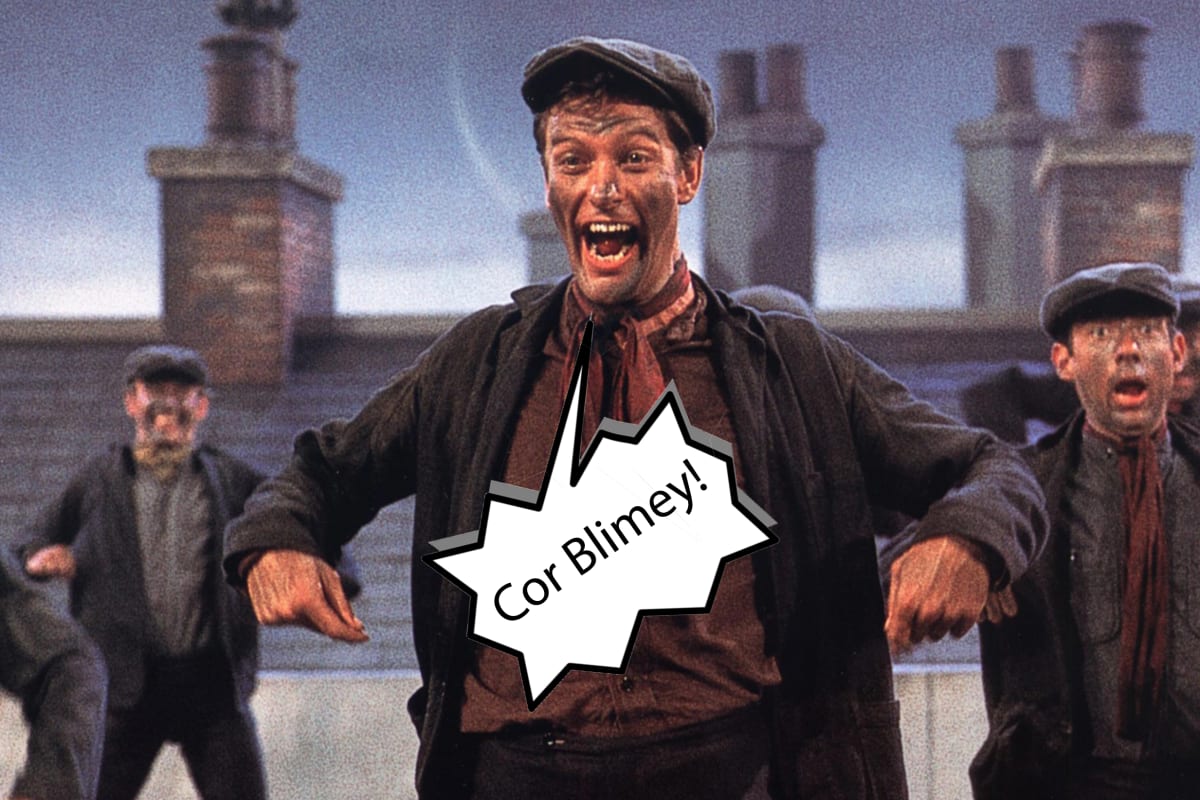
Cockney Slang:
Those fast-talking Londoners got you scratching your loaf? No fear; we’ve got the brass tacks on the city’s secret language if you’re in the market for some street cred.
Battlecruiser: Boozer
Bees and honey: Money
Bottle and glass: Arse
Bristol city/Bristols: Breasts
Cream crackered: Knackered
Elephant’s trunk: Drunk
Hank Marvin: Starving
Kick and prance: Dance
King Lear/Pig’s ear: Beer
Otis Redding: Wedding
Rub-a-dub: Pub
Ruby Murray: Curry
Sausage Roll: Goal
Jack the Ripper: Stripper
Trouble and strife: Wife
Vera Lynn: Gin
Top London stag experiences
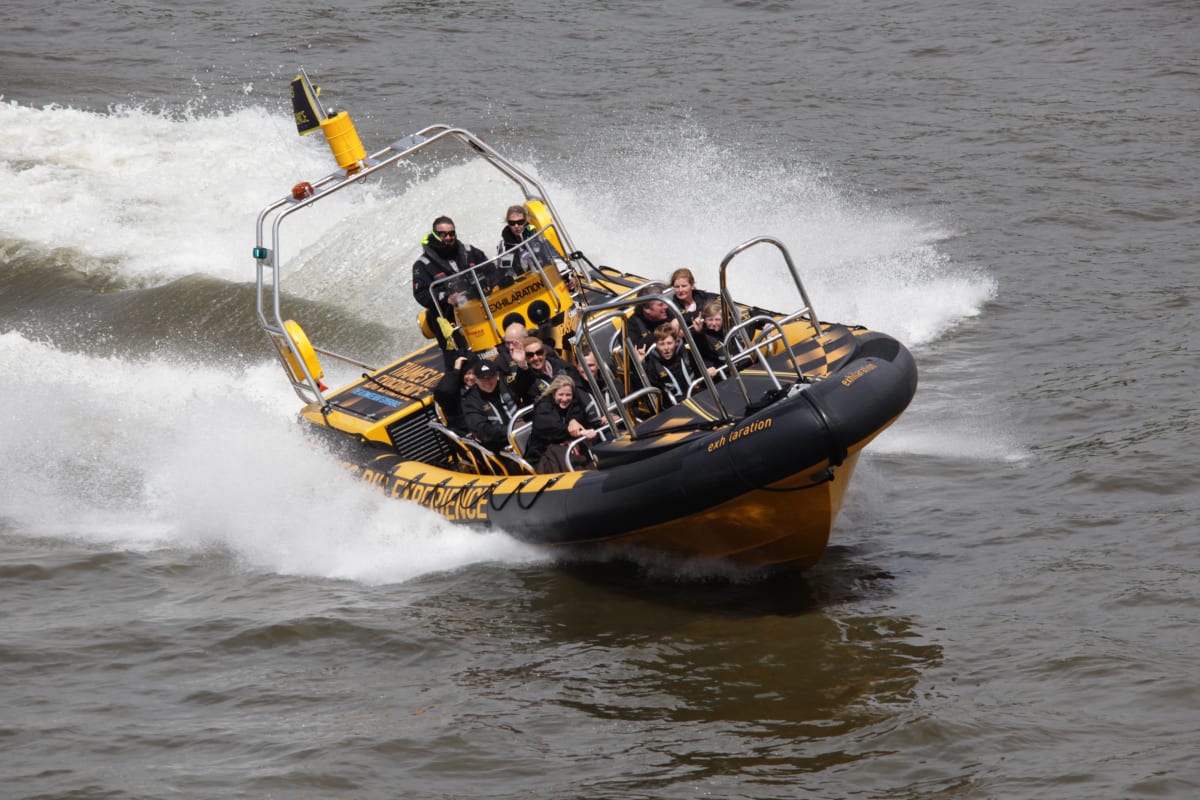
James Bond Thames RIB Blast
If you want to be shaken (not stirred), speeding down the Thames in a RIB Blast boat is the ultimate activity for you. Your mission will start outside the London eye, stopping at MI5 and MI6 where scenes from loads of the classic Bond movies were filmed. Your driver will ramp up the engine and belt down to Canary Wharf in 007 style, throwing in sharp twists and turns to really get your heart pumping.

Play with a legend
This is a once in a lifetime stag opportunity to play alongside one of your footballing heroes. With over 100 top players to choose from, you’ll get to have a kickabout with the likes of England superstar Emile Heskey, Manchester United’s Teddy Sheringham and even West Ham’s notorious Razor Ruddock. After playing a full match, you can end your unforgettable day with a few drinks with your legend in the pub.

The Stag Challenge
Take the ultimate stag challenge combining two stag activities from zorb football, combat archery, foot darts, goggle football and old school sports day, to create the perfect London stag do!
London stag nightlife hotspots
Going out, out in London is an eye-opening experience, as people switch off ‘work mode’ and let loose, cutting shapes and chatting up strangers like it’s their birthday. Each neighbourhood has its own distinct crowd and feel, from the effortless cool of Dalston to the subtle glam of Soho. This comes with a range of style choices, but most places don’t come with a strict dress code - in certain places, wearing old trainers may even get you brownie points.
Expect to splash the cash, as a night in London is not cheap. You’ll be lucky if you spend under £5 for a pint, while fancier bars can easily veer over £10 per spirit and mixer. Our London stag experts can also pimp your stag drinking experience by organising for you and your mates guest list entry to the capital's trendiest bars and clubs such as Popworld or even set up your drinking on a HoTug Jacuzzi boat. Afterwards, you’ll be glad to know that the London Underground runs a Night Tube service on selected lines on Fridays and Saturdays, meaning you can stumble into bed safely (and cheaply) after a heavy one. It should be noted that the Night Tube is a rare window where people drunkenly chat to strangers and are up for a laugh - embrace it!
Below are some of London’s best stag nightlife options, but we’ve also made a list of London’s best bars in the North, South, East and West of the capital, so you can be out enjoying the city’s nightlife in every part of the city.
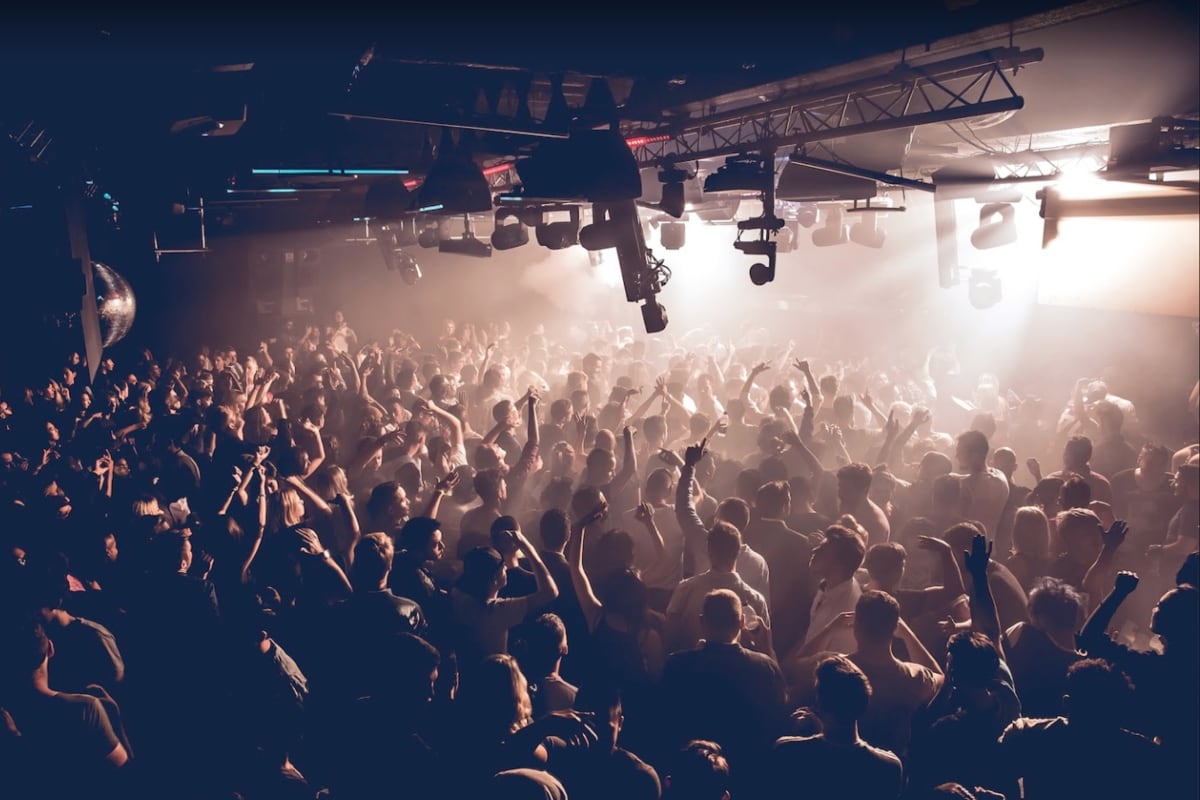
Ministry of Sound
One of the best-known clubbing venues in the UK, Ministry of Sound has defined the soundtracks for dance music lovers for years. Laid out across four dancefloors and various bars there's so much to experience, from the state-of-the-art sound system, outdoor courtyards, VIP suites and world-class DJ lineups.
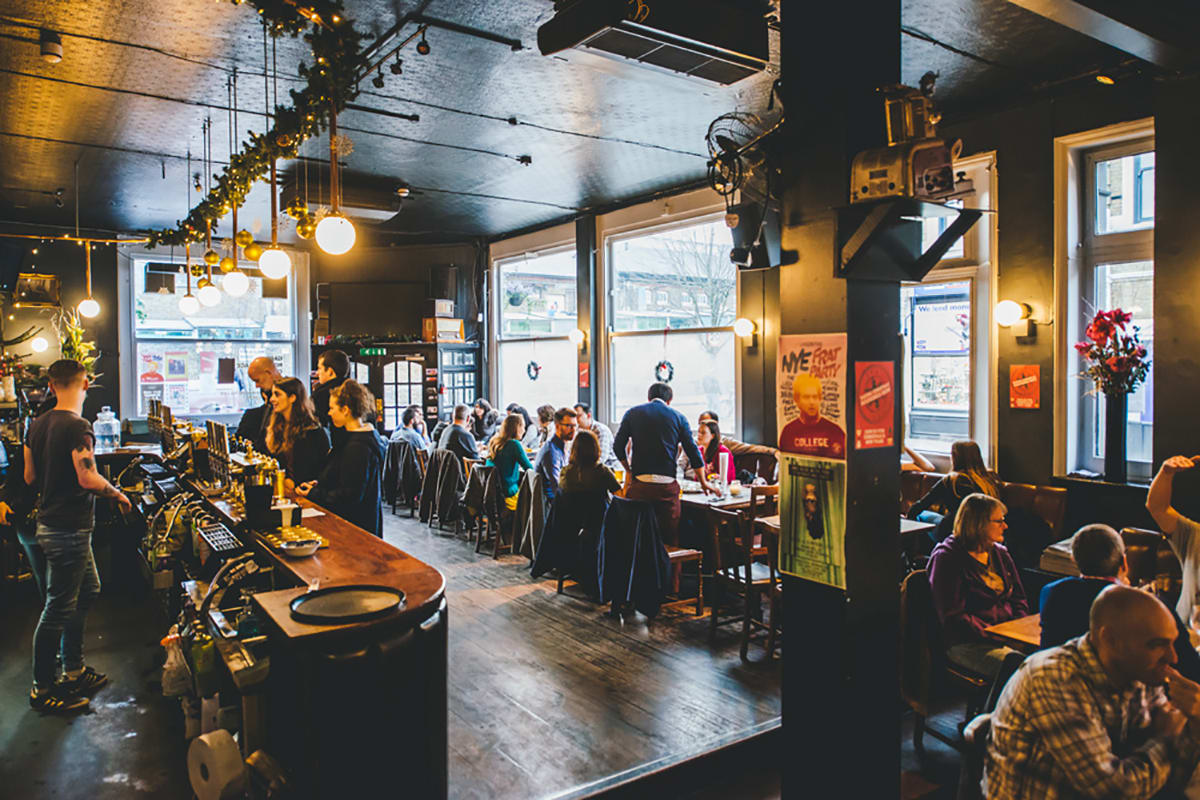
The Lock Tavern
This Camden institution is renowned Amy Winehouse haunt and equally famous for its sunday roasts, great DJs and live music nights, as well as its massive selection of beer. With a terrace, 3 bars and an ever-busy dance floor, it has become one of the most popular in North London. Despite its popularity, it still feels authentic and definitely has a different vibe to the many touristy bars in Camden.

Thames disco cruise
What better way to spend a night out in London than on a Thames disco cruise. After boarding your boat, you’ll start your big night with some drinks and get some group snaps in front of the famous London sights along the river. Then, as the night goes on you can hit the dance floor and enjoy the club classics blasted out by the resident DJ.

London Strip Limo Cruise
Experience the sights of London the right way and have an unforgettable night with your own private strip show in a limo. You can bring your own drinks and enjoy a complimentary magnum bottle of bubbly.
Eat like a local
London is one of the most multicultural cities in the world, and this is reflected in the capital’s incredibly diverse food scene - you can find dishes from almost every country in the world in this vibrant cosmopolitan city. With endless dining options, you’re sure to find something to your taste.
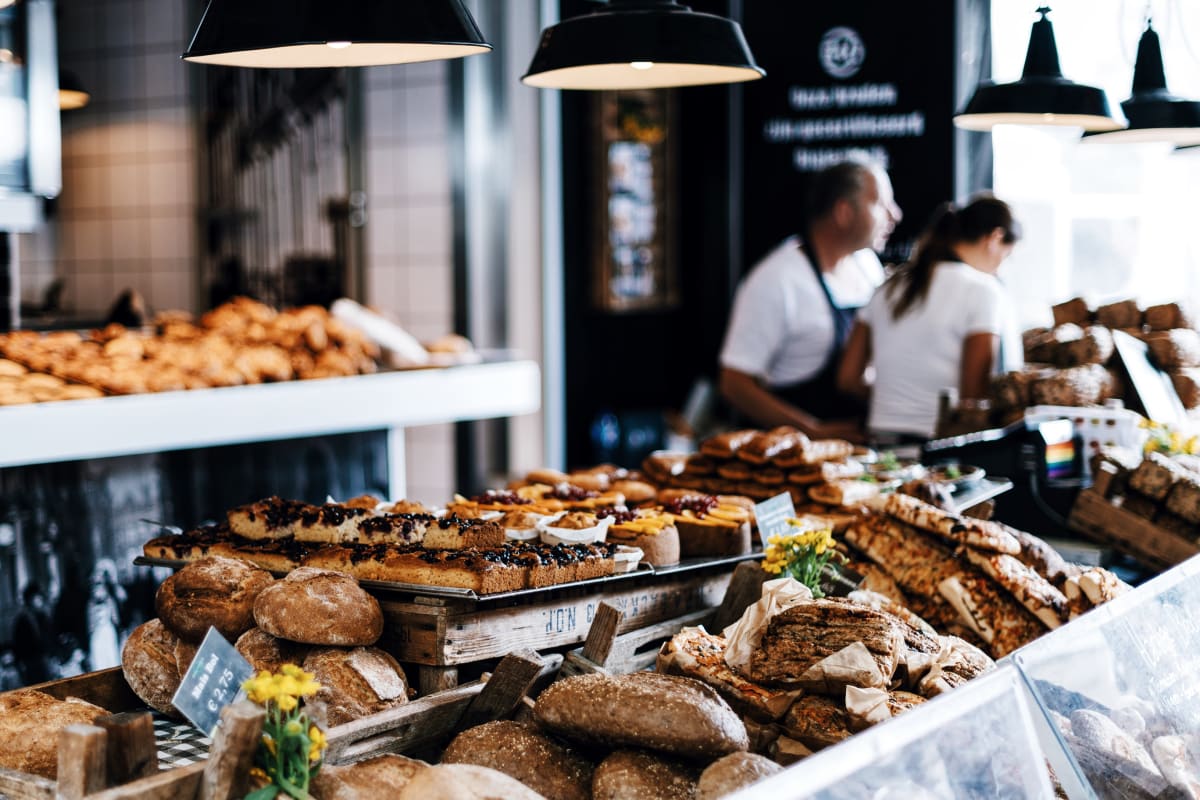
London Food markets
Head to one of London’s famous food markets to have a taste of the capital’s fresh food scene. Borough Market, Portobello Road Market and Covent Garden Market are some of the most popular local hangouts. Or, head to the notorious Brick Lane Market for some well-loved curry dishes.
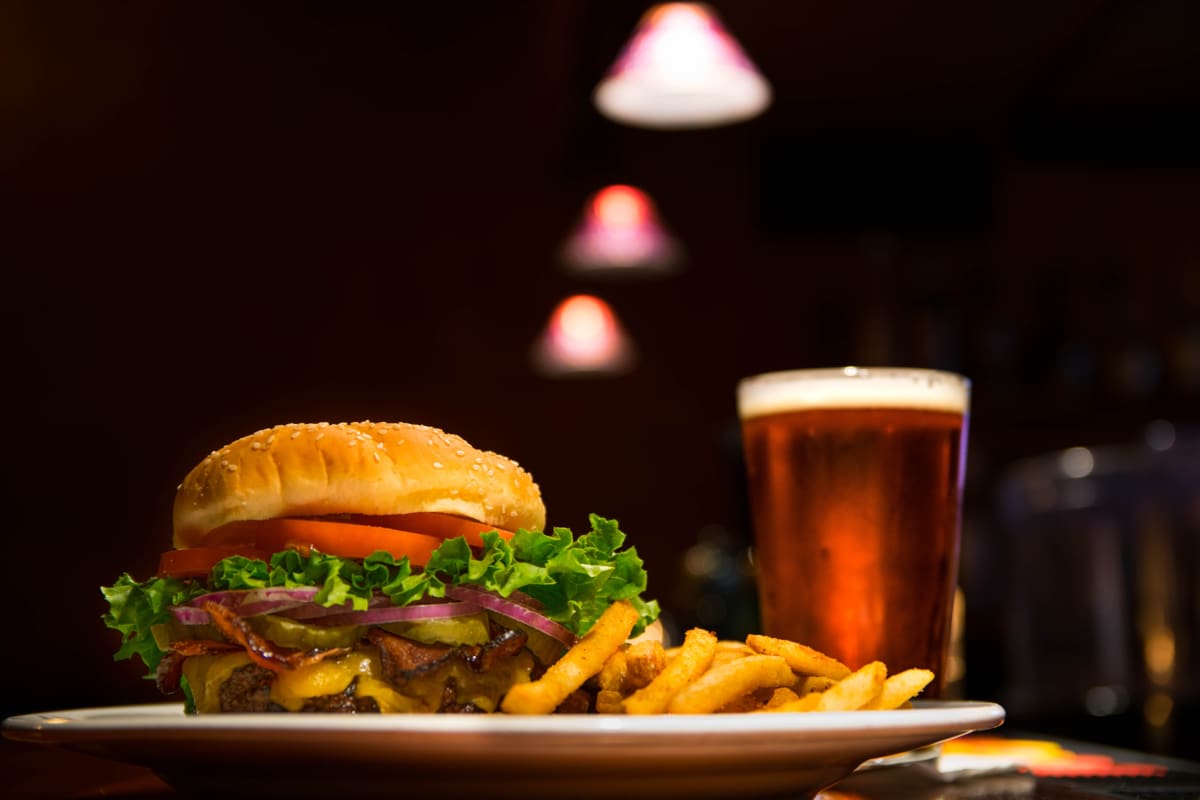
London pub grub
There’s nothing more authentic than some typical English pub grub, and your stag party can be spoilt for choice in London, with thousands of pubs spread across the city. Whether you're after a classic Sunday roast with all the trimmings or some classic burgers - you’ll never be far from a hearty pub meal in the British capital. You can even go back in time and enjoy a medieval banquet.

Pie and Mash
There’s nothing more British than pie and mash. This cockney favourite is a staple of London and has been around since at least the Victorian era. You might not be up for trying jellied eels but while in London, you’ve got to give the pie and mash a go. There’s lots of cafes across the city but try M. Manze near London Bridge for a properly authentic experience - it’s the oldest in London!
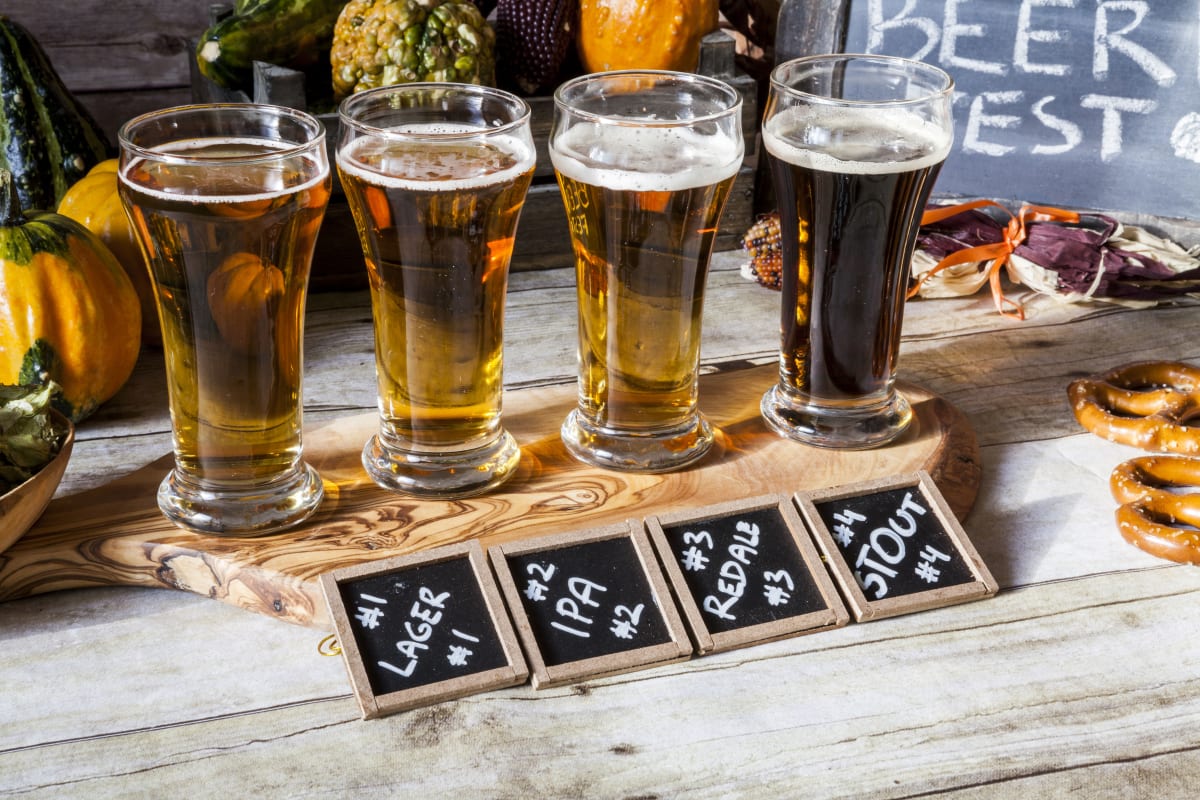
London Beer tasting masterclass
You and your stag mates can try an entertaining beer tasting masterclass. A beer expert will introduce you to some intense flavours during a beer & food matching experience. Taste a delicious selection of chocolatey stouts and hoppy ales perfectly paired with street-food style small dishes for a taste explosion. After you’ve digested all the samples, wash them down with a delicious burger and a pint of your favourite beer - nice!
Stag accomodation in London
On a tight budget? It’s no secret that London is an expensive city so if you’re just looking for a cheap place to dump your bags, a dorm room in a hostel is your best bet. Or, if you want to splurge on somewhere a bit more impressive, you’ll find hundreds of affordable hotels spread across the city. Anyway, London has an excellent public transport system, so you’ll have no problem getting around wherever you choose to stay.
Explore the city
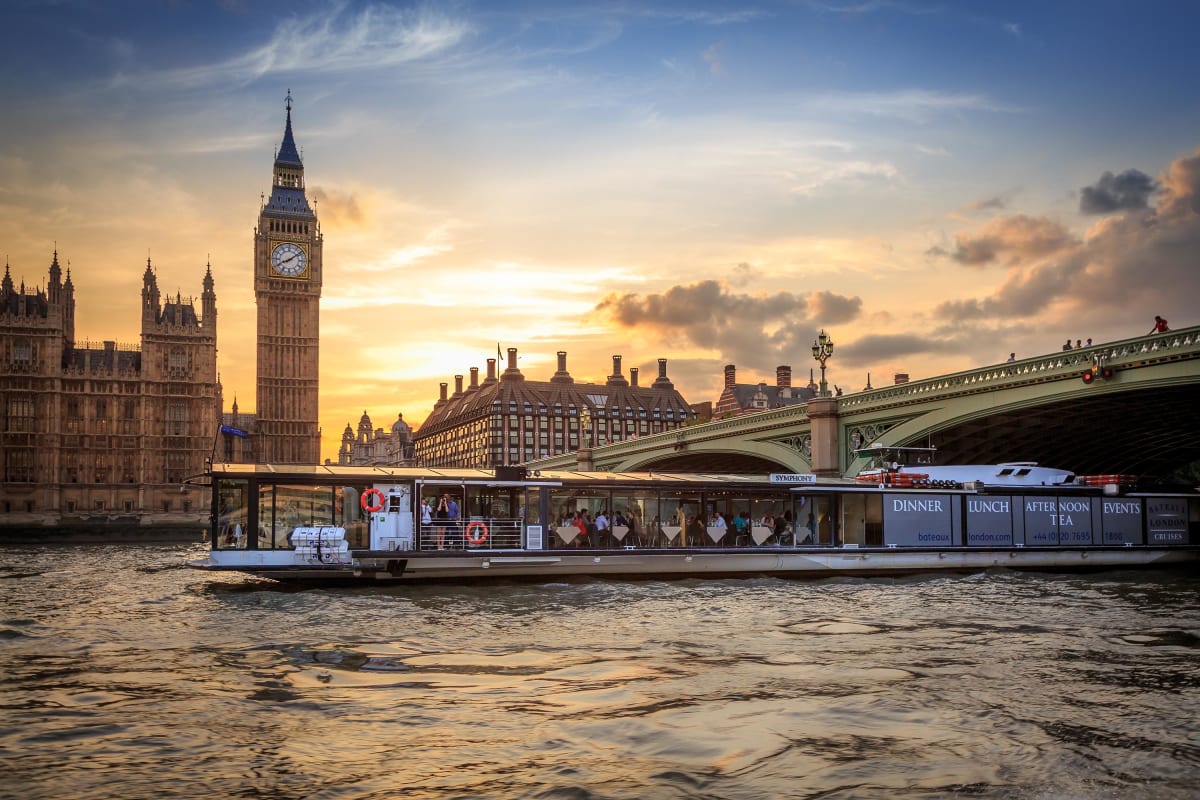
Be a tourist for the day
The city is packed full of iconic tourist sites and attractions that everyone should experience at least once - with Big Ben, The Tower of London and the historic Windsor Castle to name a few. Plus, you can take advantage of the cities huge cultural scene and visit museums like The British Museum, The Science Museum and the portrait galleries located all over the city.
The best view of the city:
There are so many, but top of the list has to be The London Eye. The giant ferris wheel (at 135m high, the largest of its kind) is situated on the South Bank and offers spectacular views across the River Thames, The Houses of Parliament and Big Ben. On a clear day, traveling at a stately 26cm per second, you can see Windsor Castle 25 miles away. Or check out the rooftop OXO Tower Restaurant, Brasserie and Bar looking out across the Thames to Charing Cross and the City of London, it serves modern British food with a global influence.
For something a little less spectacular (though clearly London), the Millennium footbridge sits between the Tate and St Paul’s Cathedral, while Westminster Bridge is close to the Houses Of Parliament, or nip over to Trafalgar Square for pics featuring Nelson’s Column (with lions), The National Gallery, pigeons and tourists.
For something a little more novel, try Dans le Noir in Clerkenwell Green, where your dining experience takes place in complete and utter darkness and served by blind waiters, or Circus in Covent Garden, where cabaret and circus acts entertain you while you dine.[
And not all the best views cost money. Head over to Primrose Hill in Camden for a great view of London’s skyline. Bring a picnic and people watch – you may even spot a few celebs. Another great option is Parliament Hill in Hampstead Heath. A more rugged park with lots of greenery, you can unwind as you take in the panoramic views of the city.
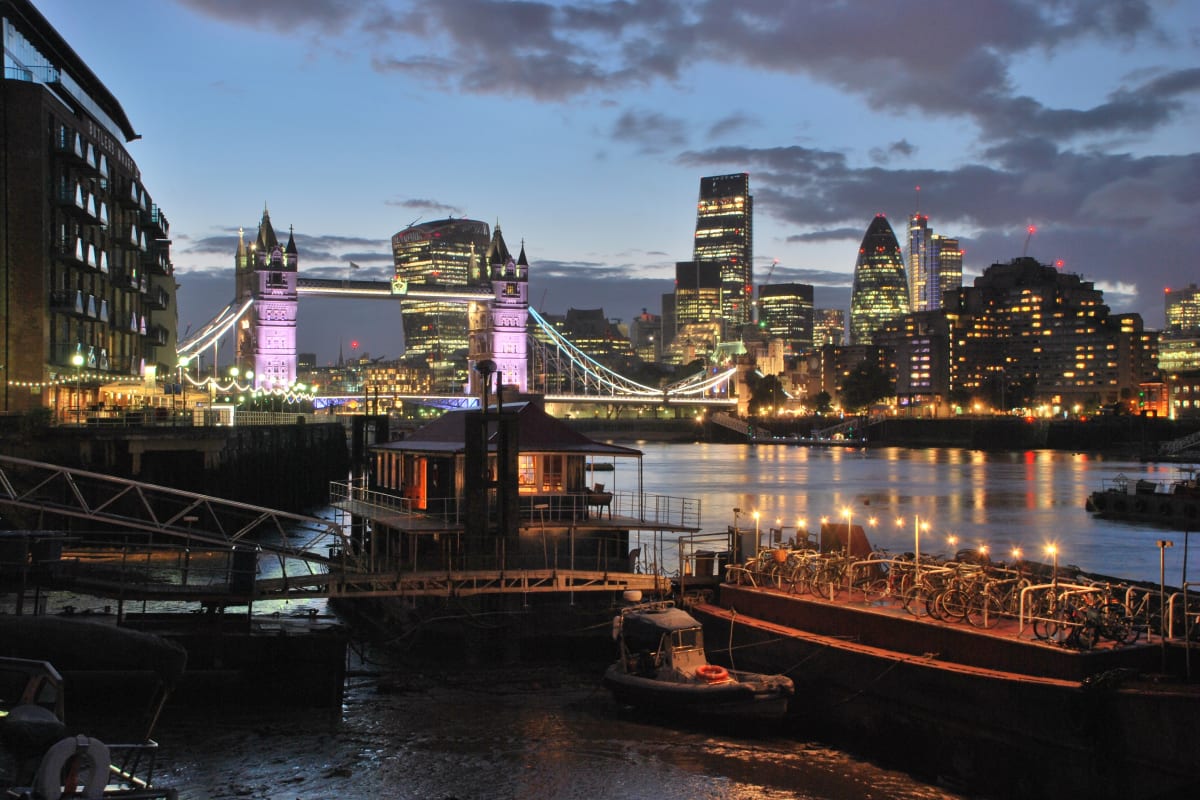
Southbank
This riverside walkway is usually buzzing with activity, filled with street food stalls, skateboarders and talented street performers at all hours of the day. It’s also host to a ton of London’s top attractions, with the famous London Eye, Shakespeare’s Globe Theatre and The Tate Modern all found along the river bank.
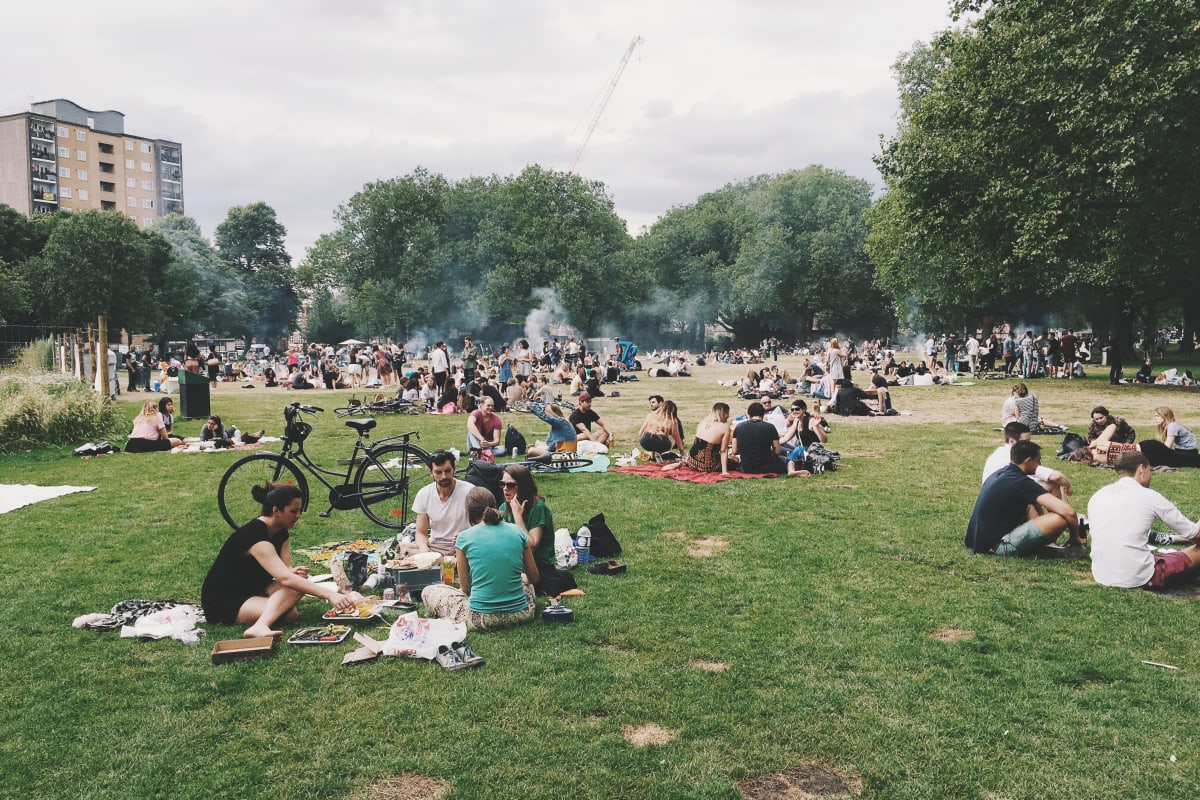
London’s parks
Escape the buzz of the city at one of the Capital’s many green spaces. Rent a boat in London’s central Hyde Park or take a day trip to Greenwich Park for some epic views of the capital’s second-tallest building Canary Wharf and a trip to the famous Greenwich Meantime brewery.

Shop til you drop
If you get some rare stag downtime and want to pick up some souvenirs or a present for your other half, no matter what you're shopping needs, London will deliver. Oxford Street is the beating heart of city's shopping, home to Selfridges and all off the high street favourites, while Camden is famed for its trendy markets. Covent Garden is buzzing with boutiques and independent shops, plus loads of great cocktail bars, perfect for a quick drink to rest your legs.









